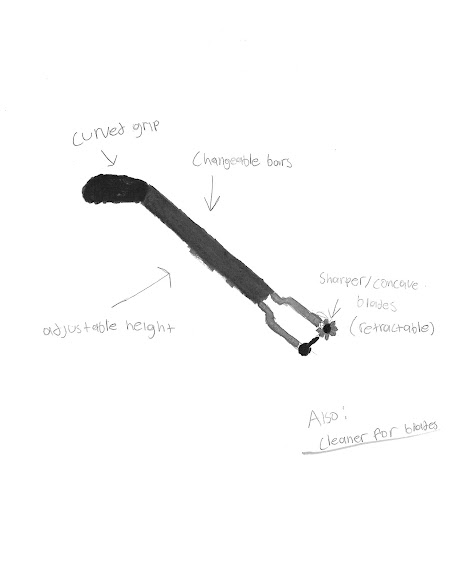Acute Edger
Hello everyone, and welcome to my first full AP for Design and Engineering! The purpose of this unit is to work and create more accessible products for everyone. This unit asked us to think about what it means to be accessible and how we can make sure that things are accessible to everyone. We also explored empathy, which is the idea of understanding where someone is coming from and seeing things from their point of view. When we did some research and interviewed people who gardened, here were some things I learned:
- Sometimes simple tools (i.e. hands) are all you need.
- Some of the tools require a lot more force to make them work.
- A lot of people don’t have any problems with the tools, but modifying them to be better is a good thing.
With all of that, here is my new and improved tool!
My new tool is an edger but made to be more friendly than the one you’d find at Home Depot. It’s a tool to clean up your garden if it’s next to a paved path of any sort (i.e driveway, sidewalk, etc). You use it by placing the edged side of it on the grass and start moving it, and it’ll cut the grass for you. You hold down the handle and move it. The main part is the bladed side. This is because it is the part doing a lot of the work for cutting the grass. There’s also the handle and grip, just to allow you to move the blades.
What I learned from this project was how hard it was to actually design something. It takes a lot to redesign and make something better, as you need to think about your audience and understand what they need. The easiest part was just the research and looking for something to modify and change. The most difficult part was drawing and getting everything to look as good as I could get it. The thing I did to overcome them was simply just trying my best. If I could do this over again, I’d probably choose a different tool that was easier to draw.
A lot of the new features are that it has a curved handle for easier use, changeable bars for smaller hands, more concave blades for easier use, and adjustable heights for those who might be shorter or taller.
Acute Edger diagram, AR, 2022
This story board is how I'd imagine someone using the Acute Edger:
Acute Edger storyboard, AR, 2022
Now for the more technical stuff. My tool could be considered a 3rd class lever because the handle acts as a fulcrum, and the effort (moving the edger) is in the middle.
I also have a diagram of the vectors (aka the directions) the edger will move:
Edger vectors, AR, 2022
I also calculated the length of the standard pole of the edger, minus the handle. I estimated the pole to be around 43 inches and its diameter to be around 1 inch, meaning its radius would be 0.5 inches. The pole is also a cylinder in shape, meaning I'd be using the cylinder equation to solve for the surface area and volume.
The volume of a cylinder is as follows:
V=πr2h
The equation for surface area is as follows:
A=2πrh+2πr2
Using these two equations, here is what I got:






Comments
Post a Comment